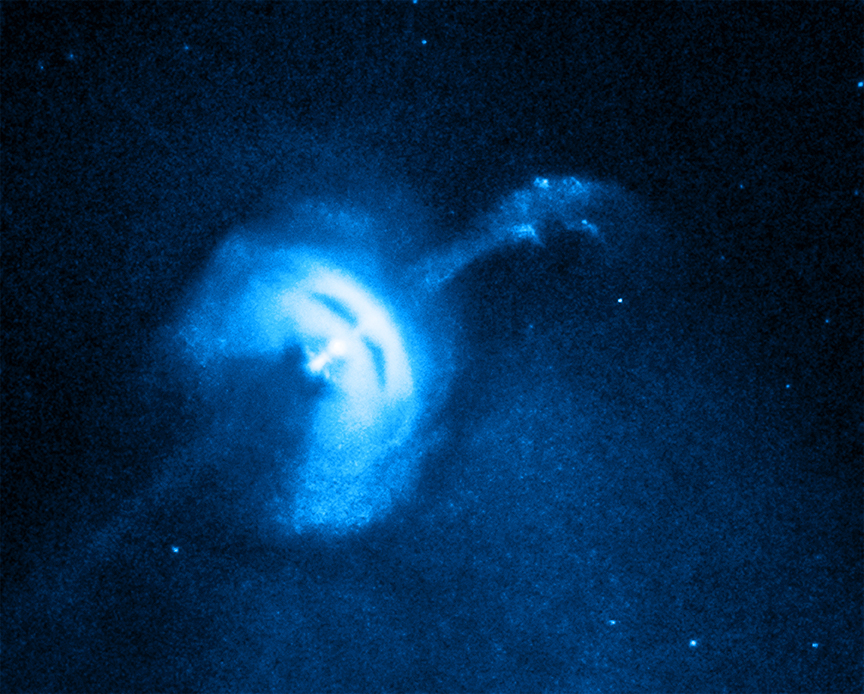Faster-Than-Light Particles Emit Superbright Gamma Rays that Circle Pulsars

Charged particles travel faster than light through the quantum vacuum of space that surrounds pulsars. As these electrons and protons fly by pulsars, they create the ultrabright gamma-ray flashes emitted by the rapidly twirling neutron stars, new research reveals.
These gamma-rays, called Cherenkov emissions, are also found in powerful particle accelerators on Earth, such as the Large Hadron Collider near Geneva, Switzerland. The rays are also the source of the bluish-white glow in the waters of a nuclear reactor. [Wacky Physics: The Coolest Little Particles in Nature]
But until now, no one thought that pulsar emissions consisted of Cherenkov radiation.
That's in part because of Albert Einstein's famous theory of relativity, which holds that nothing can travel faster than light in a vacuum. Because of those propositions, scientists previously thought that Cherenkov emissions couldn't happen in the quantum vacuum of space surrounding pulsars. That area is mostly devoid of matter but home to ghostly quantum particles that flicker in and out of existence.
So, does this new research mean Einstein's landmark theory was just violated? Not at all, said study co-author Dino Jaroszynski, a professor of physics at the University of Strathclyde in Scotland.
Pulsars create crushingly strong electromagnetic fields in the quantum vacuum surrounding the stars. These fields warp, or polarize, the vacuum, essentially creating speed bumps that slow down light particles, Jaroszynski told Live Science. Meanwhile, charged particles such as protons and electrons zoom through these fields, racing past light.
As charged particles fly through this field, they displace electrons along their path and emit radiation, which gathers into an electromagnetic wave. This wave, like an optical version of a sonic boom, is what we see as the gamma-ray flash, according to a statement.
Get the Space.com Newsletter
Breaking space news, the latest updates on rocket launches, skywatching events and more!
The team still doesn't know exactly how bright these gamma-ray flashes are, Jaroszynski said.
"What we do know is that, under the right conditions, vacuum Cherenkov radiation outshines synchrotron radiation," he added, referring to another type of radiation that is emitted from pulsars by charged particles moving along a curved path.
But the new findings could have implications beyond pulsars, the researchers said.
"This is a very exciting new prediction because it could provide answers to basic questions such as what is the origin of the gamma-ray glow at the centre of galaxies?" Jaroszynski said in the statement. "It provides a new way of testing some of the most fundamental theories of science by pushing them to their limits."
The researchers reported their findings April 25 in the journal Physical Review Letters.
- What's That? Your Physics Questions Answered
- 7 Strange Facts About Quarks
- Beyond Higgs: 5 Elusive Particles That May Lurk in the Universe
Originally published on Live Science.
Join our Space Forums to keep talking space on the latest missions, night sky and more! And if you have a news tip, correction or comment, let us know at: community@space.com.











